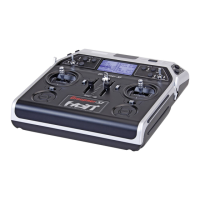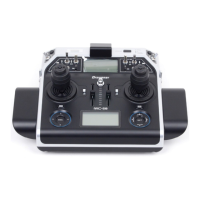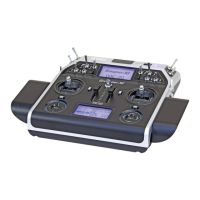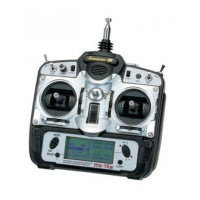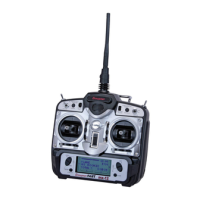49
Commissioning the transmitter
Important notices:
•
The transmitter in the set is already
preset, as delivered, with default values
which are correct for operation in most
European countries (except France).
• Up to eight servos can be operated with the
GR-16 receiver supplied in the
mc-16 HoTT
set; this receiver is supplied already bound to
the rst model memory.
Up to twelve servos can be operated with the
GR-24 receiver supplied in the
mc-20 HoTT
set; this receiver is supplied already bound to
the rst model memory.
In order to achieve the greatest possible ex-
ibility but still preclude unnecessary inadvert-
ent operator errors, control channels 5 … 8
respectively 5 … 12 have not been assigned
to any controls. This means that servos con-
nected by way of these channels will remain
in their middle positions until an operator ele-
ment has been assigned. Practically all mixers
are initially inactive for this same reason. More
about this can be found on page 112 (winged
aircraft) or 116 (helicopter models).
• The fundamental procedure for initial program-
ming of a new model memory location can be
found on page 68 and the programming ex-
amples that begin on page 282.
• When the remote control system is switched
on, being bonded or when making settings,
that the transmitter’s antenna is always far
enough away from the receiver’s antennas. If
the transmitter’s antenna is brought too close
to the receiver’s antennas this will cause re-
ceiver over-modulation and its red LED will il-
luminate. At the same time the return channel
will drop out and, as a consequence, the eld
strength indicator in the transmitter’s screen
will be replaced by an “x” and the receiver’s
current battery voltage display will show 0.0 V.
The remote control is then in Fail-Save mode,
see page 208, i. e. servos will remain in their
current positions until a new, valid signal can
be received. In such a case, increase the dis-
tance (between the transmitter and the model
containing the receiver) until the indicators are
again “normal”.
WARNING:
Never switch the transmitter off whilst op-
erating a model! If this should happen ac-
cidentally, keep your nerve and wait until
the transmitter screen is entirely blank, i. e. until
the transmitter has shut down completely; this
takes at least three seconds. Do not switch your
transmitter on again until this has occurred. If
you neglect this, there is a risk that the transmit-
ter will “hang” immediately after being switched
on, and you will lose control of the model. In this
case your only recourse is to switch the transmit-
ter off again, allow it to shut down completely,
and then switch on once more after the correct in-
terval.

